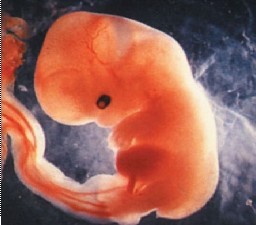关于地震的英语作文精选范文17篇
发布日期:2025-03-27
1. Earthquakes Earthquakes are one of the most powerful and destructive natural disasters on our planet. They occur when the tectonic plates beneath the Earth's surface suddenly shift, releasing a vast amount of energy. When an earthquake strikes, the ground shakes violently. Buildings may collapse, roads can crack, and bridges might break apart. This not only causes damage to infrastructure but also endangers the lives of countless people. Many lose their homes, and some even lose their loved ones in the chaos. In addition to the immediate destruction, earthquakes can trigger other disasters such as tsunamis, landslides, and fires. Tsunamis, huge ocean waves, can flood coastal areas, while landslides can bury entire villages under tons of soil and rocks. Fires may break out due to damaged power lines and gas pipelines, further adding to the destruction. However, with advanced technology and better understanding of earthquakes, we can take measures to reduce their impact. Building earthquake-resistant structures, conducting regular earthquake drills in schools and communities, and having early warning systems are all effective ways to protect ourselves. Although earthquakes are terrifying, by working together and being prepared, we can minimize the harm they cause. 2. The Impact of Earthquakes Earthquakes are natural phenomena that can have a profound impact on human lives and the environment. These sudden and violent tremors of the Earth's crust can bring about widespread destruction and chaos. The most immediate consequence of an earthquake is the damage to buildings and infrastructure. Skyscrapers may crumble to the ground, and houses can be reduced to rubble. This not only results in the loss of property but also leaves many people homeless. In addition, transportation systems such as roads, railways, and airports can be severely damaged, disrupting the flow of people and goods. Another significant impact is on human lives. Earthquakes often lead to a large number of casualties. People may be trapped under collapsed buildings, and rescue efforts can be extremely difficult and time-consuming. The psychological trauma caused by such disasters can also be long-lasting for survivors. Environmentally, earthquakes can cause landslides, which can change the landscape and block rivers. This can lead to flooding in some areas. Moreover, the release of dust and debris into the air during an earthquake can have an impact on air quality. To deal with the aftermath of earthquakes, international aid and cooperation are crucial. Countries around the world should come together to provide emergency supplies, medical assistance, and help with reconstruction efforts. Only through collective efforts can we better recover from the devastating effects of earthquakes. 3. Earthquake Safety Earthquakes can strike without warning, so it's essential to know how to stay safe during one. When an earthquake begins, if you are indoors, the first thing to do is to take cover under a sturdy piece of furniture, such as a table or desk. Hold on tightly and stay there until the shaking stops. Avoid standing near windows, glass doors, or anything that could fall. If you are in bed, stay there and protect your head and neck with a pillow. Do not try to run outside during the shaking as there is a high risk of being hit by falling objects. Once the shaking subsides, carefully make your way outside to an open area away from buildings, trees, and power lines. When outdoors, stay away from buildings, bridges, and other structures that could collapse. If you are in a car, pull over to a safe place, away from overpasses and power lines, and stay inside the vehicle until the earthquake is over. It's also important to be prepared in advance. Have an emergency kit ready at home, which should include food, water, a first-aid kit, a flashlight, and a battery-powered radio. Familiarize yourself with the evacuation routes in your school, workplace, and neighborhood. By following these safety tips, we can increase our chances of surviving an earthquake. 4. Earthquakes and Human Society Earthquakes have been a constant threat to human society throughout history. These natural disasters can cause massive destruction, affecting every aspect of our lives. Economically, earthquakes can be a huge burden. The cost of rebuilding damaged infrastructure, such as buildings, roads, and utilities, is astronomical. Many businesses may be forced to shut down, leading to job losses and a decline in economic activity. Small and medium-sized enterprises are particularly vulnerable, as they may not have the financial resources to recover quickly. Socially, earthquakes disrupt communities. Families are separated, and the sense of security that people once had is shattered. The psychological impact on survivors can be severe, leading to post-traumatic stress disorder (PTSD) and other mental health issues. Children may be especially affected, as they may experience fear and anxiety. In response to earthquakes, governments and organizations around the world are constantly working to improve earthquake prediction and prevention methods. Scientists are studying the Earth's crust to better understand earthquake patterns, while engineers are designing more earthquake-resistant buildings. Community awareness programs are also being carried out to educate people about earthquake safety. By taking these steps, we can hope to reduce the impact of earthquakes on human society. 5. The Science Behind Earthquakes Earthquakes are fascinating natural phenomena that are deeply rooted in the science of geology. The Earth's crust is made up of several large tectonic plates that are constantly moving very slowly. These plates float on the semi-fluid mantle beneath them. When the edges of two tectonic plates interact, stress builds up over time. Eventually, the stress becomes too great, and the plates suddenly slip past each other. This sudden movement releases a huge amount of energy in the form of seismic waves, which travel through the Earth and cause the ground to shake. Seismologists use various instruments to study earthquakes. Seismographs are the most common tool. They detect and record the seismic waves, allowing scientists to measure the magnitude of an earthquake. The magnitude scale, such as the Richter scale, indicates the amount of energy released during an earthquake. In addition to studying the waves, scientists also analyze the patterns of past earthquakes to predict future ones. They look at factors like fault lines, which are the boundaries between tectonic plates, and the frequency of past seismic activity in an area. By understanding the science behind earthquakes, we can better prepare for these natural disasters and develop strategies to mitigate their impact. 6. Earthquakes in History Throughout history, earthquakes have left a mark on human civilization. Some of the most devastating earthquakes have changed the course of history in the regions where they occurred. One of the most famous historical earthquakes is the 1755 Lisbon earthquake. It struck the Portuguese capital on All Saints' Day and was followed by a series of tsunamis and fires. The destruction was immense, with much of the city being destroyed. Tens of thousands of people lost their lives, and it had a profound impact on the economy and culture of Portugal. Another significant earthquake was the 1906 San Francisco earthquake. This earthquake, along with the subsequent fires, almost completely destroyed the city. It led to major changes in building codes in California, as architects and engineers worked to design more earthquake-resistant structures. In China, the 1976 Tangshan earthquake was a tragic event. It was one of the deadliest earthquakes of the 20th century. The city of Tangshan was almost flattened, and hundreds of thousands of people lost their lives. This earthquake also spurred China to strengthen its earthquake monitoring and disaster prevention efforts. These historical earthquakes serve as a reminder of the power of nature and the importance of being prepared for such disasters. They have also taught us valuable lessons that we can apply to protect ourselves in the face of future earthquakes. 7. Coping with Earthquakes Coping with earthquakes requires a combination of preparedness, response, and recovery strategies. Before an earthquake, it's vital to make your home and workplace as safe as possible. Secure heavy furniture to the floor or walls, and store breakable items in low cabinets. Create an emergency plan with your family or colleagues, including evacuation routes and meeting points. During an earthquake, follow the safety guidelines. Take cover if indoors and move to an open area if outdoors. Stay calm and avoid panicking, as this can lead to more dangerous situations. If you are in a building that starts to collapse, try to find a small, protected space such as a corner or under a sturdy object. After the earthquake, check for injuries and provide first aid if necessary. Be cautious of aftershocks, which can also be dangerous. Inspect your home or workplace for damage, and do not enter buildings that appear unstable. Listen to the radio or other official channels for information and instructions. Recovery from an earthquake can be a long and difficult process. Rebuilding damaged structures, restoring utilities, and getting life back to normal require a lot of effort and resources. Communities need to come together, and external aid may also be necessary. By being well-prepared and knowing how to cope at each stage, we can better deal with the challenges posed by earthquakes. 8. Earthquakes and the Environment Earthquakes have a significant impact on the environment, altering landscapes and ecosystems in various ways. When an earthquake occurs, the ground shaking can trigger landslides. These landslides can carry large amounts of soil, rocks, and vegetation down slopes, burying forests, fields, and sometimes even entire villages. The disruption of the Earth's surface can also affect water bodies. Earthquakes can cause rivers to change their courses, creating new lakes or drying up existing ones. This can have a profound impact on aquatic ecosystems, affecting fish populations and other water-dependent organisms. In addition, the release of dust and debris into the atmosphere during an earthquake can have short-term and long-term effects on air quality. The dust can reduce visibility and may also contribute to respiratory problems for humans and animals. Furthermore, earthquakes can damage natural habitats, displacing wildlife. Animals may lose their homes and food sources, which can lead to a decline in their populations. Some species may be particularly vulnerable, and their survival could be at risk. Understanding the environmental impact of earthquakes is crucial for conservation efforts. Scientists and environmentalists work to study these effects and develop strategies to protect the environment during and after earthquakes. This includes measures such as reforestation after landslides and protecting water sources from contamination. 9. Earthquake Prediction Earthquake prediction is an area of research that has fascinated scientists for decades. While it's still not possible to accurately predict exactly when and where an earthquake will occur, significant progress has been made in recent years. One approach to earthquake prediction is monitoring seismic activity. Seismographs are placed in various locations around the world to detect small earthquakes and changes in seismic patterns. Scientists look for signs such as an increase in the frequency of small earthquakes or changes in the behavior of seismic waves. Another method involves studying the deformation of the Earth's crust. GPS technology and satellite imagery are used to measure how the ground is moving. If there are unusual deformations in an area, it could be a sign that stress is building up and an earthquake may be imminent. However, earthquake prediction is still a complex and uncertain science. There are many factors that can influence earthquake occurrence, and not all earthquakes show clear precursors. False alarms are also a problem, as they can cause unnecessary panic. Despite these challenges, continued research in earthquake prediction is essential. If we can improve our ability to predict earthquakes, we can give people more time to prepare, evacuate, and potentially save many lives. This research also helps in developing better building codes and disaster management strategies. 10. Earthquakes and Urban Planning Earthquakes pose a unique challenge to urban planning. As more and more people live in cities, ensuring the safety of urban residents during an earthquake is of utmost importance. In urban planning, the location of buildings is a critical factor. Areas prone to earthquakes should be carefully evaluated before construction. Buildings should be designed to withstand seismic forces. This includes using flexible building materials and proper structural designs. For example, modern skyscrapers often have shock-absorbing systems to reduce the impact of earthquake vibrations. Transportation networks also need to be considered. Roads, bridges, and public transportation systems should be built to remain functional during and after an earthquake. Evacuation routes should be clearly marked and kept unobstructed. Public spaces such as parks and squares can serve as safe gathering places during an emergency. In addition, urban planners need to think about the distribution of essential services such as hospitals, fire stations, and police stations. These facilities should be located in areas that are less likely to be damaged and easily accessible during an earthquake. Education and awareness programs are also an important part of urban planning related to earthquakes. Residents should be educated about earthquake safety, including what to do during an earthquake and how to prepare their homes. By integrating earthquake safety into urban planning, we can create more resilient cities that can better withstand the impact of earthquakes. 11. The Global Perspective on Earthquakes Earthquakes are a global phenomenon that affects countries and regions around the world. Different parts of the globe have different levels of earthquake activity due to their geological settings. Regions along the Pacific Ring of Fire, such as Japan, Chile, and parts of the United States, are particularly prone to earthquakes. These areas are located at the boundaries of tectonic plates, where the risk of plate movement and subsequent earthquakes is high. Developed countries like Japan have made significant investments in earthquake preparedness. They have advanced earthquake monitoring systems, strict building codes, and regular earthquake drills for the public. As a result, they are able to minimize the damage and loss of life during earthquakes, although no system is completely foolproof. In contrast, some developing countries may face more challenges in dealing with earthquakes. Limited financial resources can make it difficult to implement advanced earthquake prevention measures. Building codes may not be strictly enforced, and infrastructure may be less resistant to earthquakes. This can lead to more severe consequences when an earthquake strikes. International cooperation is crucial in addressing the global issue of earthquakes. Countries can share knowledge, technology, and resources. Developed countries can assist developing countries in improving their earthquake preparedness and response capabilities. By working together on a global scale, we can better protect people from the devastating effects of earthquakes. 12. Earthquakes and Emergency Response When an earthquake strikes, a rapid and effective emergency response is crucial to saving lives and minimizing damage. The first minutes and hours after an earthquake are known as the "golden hours," during which immediate actions can make a big difference. Emergency responders such as firefighters, police officers, and medical teams are among the first to arrive at the scene. Firefighters are responsible for putting out fires that may break out due to damaged electrical or gas lines. Police officers help to maintain order, control traffic, and assist with evacuations. Medical teams provide first aid to the injured and transport them to hospitals. Search and rescue teams play a vital role in finding survivors trapped under collapsed buildings. These teams are trained to use specialized equipment such as thermal imaging cameras and listening devices to locate people. They work carefully to remove debris and safely extract survivors. In addition to the efforts of emergency responders, the general public also has a role to play. People should follow the instructions of authorities and cooperate during the evacuation process. Neighbors can also help each other, especially those who may be more vulnerable, such as the elderly or disabled. After the initial emergency phase, the focus shifts to providing relief and support to the affected population. This includes distributing food, water, and shelter. International aid organizations often step in to assist with the relief efforts, bringing in resources and expertise from around the world. 13. Earthquakes and Insurance Earthquakes can cause significant financial losses, making insurance an important consideration. Homeowners and businesses often purchase earthquake insurance to protect themselves from the financial burden of earthquake damage. Earthquake insurance policies typically cover damage to buildings, personal property, and in some cases, additional living expenses if the insured property becomes uninhabitable. However, the terms and coverage of these policies can vary widely. Insurance companies use complex models to assess the risk of earthquakes in different areas. They consider factors such as the geological characteristics of the region, the likelihood of an earthquake occurring, and the potential severity of the damage. Based on these assessments, they determine the premiums that policyholders need to pay. For homeowners, it's important to carefully read and understand the terms of the earthquake insurance policy. Some policies may have deductibles, which are the amount the policyholder must pay out of pocket before the insurance coverage kicks in. There may also be limitations on the amount of coverage for certain types of damage. Businesses also rely on earthquake insurance to protect their operations. In addition to property damage, business interruption insurance can cover lost income during the period when the business is unable to operate due to earthquake damage. This helps businesses to recover more quickly and resume normal operations. However, in some cases, insurance may not be sufficient to cover all the losses. This can be due to factors such as a high deductible, limited coverage, or a large-scale earthquake that overwhelms the insurance industry's capacity. In such situations, government assistance and other forms of support may be needed. 14. Earthquakes and School Safety Ensuring the safety of students and teachers during an earthquake is a top priority for schools. Schools should have comprehensive earthquake safety plans in place. These plans should include regular earthquake drills. Drills help students and teachers to practice the correct procedures during an earthquake, such as taking cover under desks or tables and evacuating quickly and orderly to an open area. By repeating these drills, everyone becomes more familiar with the process and can react more calmly in a real emergency. School buildings should be constructed or retrofitted to meet strict earthquake safety standards. This includes having a strong structural design, reinforced walls and columns, and secure roofing systems. Inspections should be carried out regularly to ensure that the buildings remain safe. In addition to physical safety, schools should also address the psychological well-being of students after an earthquake. Counselors can be available to provide support to students who may be traumatized by the experience. Teachers can also play a role in reassuring students and helping them to process their emotions. Educational programs about earthquakes can also be incorporated into the curriculum. Students can learn about the causes of earthquakes, how to stay safe during one, and the impact of earthquakes on society. This knowledge empowers them to take appropriate actions and be more prepared. By focusing on these aspects of school safety, we can create a secure environment for students and teachers during and after earthquakes. 15. Earthquakes and Cultural Heritage Earthquakes pose a significant threat to cultural heritage sites around the world. These sites, which include ancient temples, historical buildings, and archaeological ruins, are not only valuable for their aesthetic and historical significance but also represent the identity and memory of a nation or community. When an earthquake strikes, these delicate structures are often at risk of damage or complete destruction. The shaking of the ground can cause walls to collapse, roofs to cave in, and sculptures to be toppled. For example, many ancient temples in Greece and Rome have faced damage from earthquakes over the centuries. Protecting cultural heritage sites from earthquakes requires a multi-faceted approach. Engineers and conservationists work together to develop techniques for strengthening these structures. This may involve using modern materials such as carbon fiber to reinforce weak areas without detracting from the original appearance of the building. Advanced monitoring systems can also be installed at these sites to detect any signs of movement








